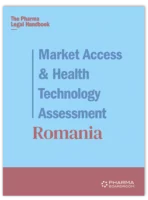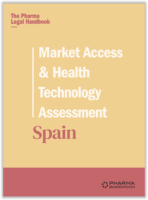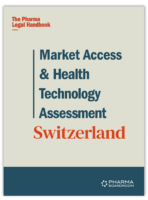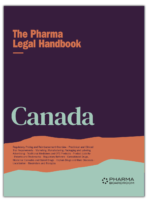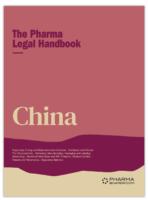Orphan Drugs and Rare Diseases
Fasken / Canada
All legal aspects surrounding orphan drugs and rare diseases in Canadian Pharma. Prepared in association with Fasken, a leading global law firm, this is an extract from The Pharma Legal Handbook: Canada, available to purchase here for GBP 119.
1. What is the definition of Rare Diseases in your country?
In Canada, “Rare Diseases” are defined as “life-threatening, debilitating or serious, and chronic conditions affecting a small number of patients, many of which predominantly affect children, as these diseases are often genetically based and appear at birth or in early childhood”.[1] The Canadian Organization for Rare Disorders defines a rare disease as one that affects fewer than one in 2,000 people.
[1] Government of Canada, “Investing in the Middle Class: Budget 2019”, March 19, 2019 at page 61, online: https://budget.gc.ca/2019/docs/plan/budget-2019-en.pdf
2. Does the designation of ‘Orphan Drug’ exist in your country? (Does it correspond with the definition of Rare Diseases?)
The designation “Orphan Drug” does not currently exist in Canada. Instead, the designation “Drugs for rare diseases” is used to refer to orphan drugs.
3. What is the regulatory framework for the authorization of an Orphan Drug? (Is this regulatory framework based on Rare Disease status or can it alternatively be based on Orphan Drug foreign status?)
There is currently no regulatory framework for the authorization of an Orphan Drug.
Health Canada proposed an Orphan Drug Regulatory Framework in 2012, but it was not enacted and, in October 2017, the federal Government deleted all references to the framework from the Ministry of Health’s website without notice or consultation.[1]
However, in 2019 the federal Government committed to creating a national strategy for drugs for rare diseases. In 2021, CADTH released the final report on drugs for rare diseases framework. Consultation on the final report took place in the summer of 2021. The objective is to launch the national strategy in 2022.
In the meantime, Orphan Drugs therefore follow the same regulatory approval process as other drugs in Canada. This standard pathway includes a “New Drug Submission”, which requires manufacturers to submit evidence of a drug’s safety, efficacy and quality to Health Canada. If a submission is acceptable, Health Canada will issue a Notice of Compliance (“NOC”), which allows a manufacturer to market the drug in Canada. There are some programs to help sponsor development and incentive, but there is currently no specialized Orphan Drug framework.
[1] Forrest, M. (2017, October 16). Health Canada Gives ‘Kiss of Death’ to Planned Policy for Rare-Disease Drugs. National Post.
4. Does your country have provisions for relaxed clinical trial/scientific evidence requirements in respect of Orphan Drugs as compared to other drugs?
No, Canada does not currently have provisions for relaxed clinical trial/scientific evidence requirements in respect of Orphan Drugs as compared to other drugs. However, in some cases, a Notice of Compliance with Conditions (“NOC/c”) may be issued.
In particular, market authorization through a NOC/c allows Health Canada to provide earlier market access to potentially life-saving drugs but requires that the manufacturer undertakes additional studies before a full NOC can be issued. This undertaking allows Health Canada to facilitate access based on promising evidence of clinical significance while monitoring the drug through enhanced post-market surveillance.[1]
[1] See: Health Canada Guidance Document: Notice of Compliance with Conditions (NOC/c), online: https://www.canada.ca/en/health-canada/services/drugs-health-products/drug-products/applications-submissions/guidance-documents/notice-compliance-conditions.html
5. Is there an expedited pathway for Orphan Drugs?
There is no expedited pathway specifically for Orphan Drugs, however, drug applications may generally be fast-tracked under one of two pathways: the Priority Review pathway or the NOC/c pathway described above.
Most new drugs have a review target of 300 days; however, the Priority Review pathway allows for the quickest review target of 180 calendar days; whereas the NOC/c pathway allows for an expedited 200-day target.
In both cases, the pathways are available to manufacturers if the drug is intended for the treatment, prevention or diagnosis of serious, life-threatening or severely debilitating diseases or conditions for which: (i) there is no alternative therapy available on the Canadian market or, (ii) where the new product represents a significant improvement in the benefit/risk profile over existing products.
However, the Priority Review pathway applies to drugs that show substantial evidence of clinical effectiveness, i.e. at least two adequate and well controlled clinical studies, each convincing on its own to establish effectiveness of the drug involved.
In contrast, the NOC/c pathway applies to drugs with promising evidence
of clinical effectiveness throughout the clinical trial phases. For example, the
data to support authorization under the NOC/c policy is often:
- limited due to a small number of patients eligible for clinical trial participation;
- based on surrogate marker data predictive of clinical benefit; or
- based on larger trials in which final outcomes of morbidity and mortality
are lacking.
The data required for a NOC/c submission is therefore unlikely to meet the evidentiary requirements of the Priority Review Pathway.
In addition to these two pathways for drug expedited approval, the Special Access Program allows patients to access a drug which is not authorized in Canada under a shortened twenty-four hour application process for treatment, diagnosis, or prevention of serious or life-threatening conditions when conventional therapies have been considered and ruled out, have failed, are unsuitable or unavailable.
6. Are foreign marketing authorizations recognized in your jurisdiction for Orphan Drugs? If yes, marketing authorizations from which countries are recognized?
There are no foreign marketing authorizations recognized in Canada for Orphan Drugs.
7. Can Orphan Drugs be reimbursed? If so, is there a specific reimbursement procedure for Orphan Drugs?
There is currently no specific reimbursement procedure for Orphan Drugs. In general, drugs may be reimbursed if a public or private insurer deems it cost-effective based on a health technology assessment.
In exceptional cases, including, for example if a drug may be (i) a last resort (ii) for a chronic and (iii) serious medical condition, then a public or private plan may provide coverage for a medication that would otherwise not be reimbursed by the plan.
8. How are the prices of Orphan Drugs regulated?
The prices of Orphan Drugs are regulated in the same manner as other drugs in Canada. In the cases of patented drug, they are regulated by the Patented Medicines Review Board (“PMPRB”), which sets the maximum price for which a patented drug may be sold in Canada.
The prices of drugs are also negotiated by the pan-Canadian Pharmaceutical Alliance which represents a group of provinces, territories and other institutions, who, by combining their bargaining power, seek to reduce the cost of pharmaceuticals.
9. In case of reference price based on a basket of countries, what countries are included?
The PMPRB uses reference pricing to determine the maximum price for which a patented drug may be sold in Canada. As of July 1, 2022, the new basket of countries includes Australia, Belgium, France, Germany, Italy, Japan, the Netherlands, Norway, Spain, Sweden and the United Kingdom.
10. Have there been any significant legal/judicial developments in relation to Orphan Drugs in your country?
Yes, on June 6, 2022 the Quebec Ministry of Health and Social Services published the Quebec Rare Diseases Policy. The Policy focuses on three key policies areas and objective: (i) awareness and training, (ii) easy and equitable access tp diagnosis, care and services and (iii) promotion of research, innovation and data collection.
11. Are there proposals for reform or significant change to the regulation of Orphan Drugs? If yes, when are they likely to come into force?
Yes, there are proposals for significant changes to the regulation of Orphan Drugs in Canada. The 2019 federal budget proposed a national strategy for drugs for rare diseases that involved a distinct process and funding for specialized drugs.. The proposed reformation is stated to focus on five key elements:
- The development of a national strategy to ensure uniform patient access to Orphan Drugs across the country;
- The establishment of a unique drug approval pathway to improve patient access to Orphan Drugs;
- The development of a structured evidence collection strategy to study the impact of Orphan Drugs on patients;
- The negotiation of performance-based funding agreements with manufacturers of Orphan Drugs whereby the amount paid for an Orphan Drug will depend on the efficacy of the drug; and
- Ensuring an approval process for Orphan Drugs that is both transparent and clearly communicated.[1][1] See: Government of Canada, “Investing in the Middle Class: Budget 2019”, March 19, 2019 at page 61, online: https://budget.gc.ca/2019/docs/plan/budget-2019-en.pdf
More recently, CADTH released the final report on the Framework for Drugs for Rare Diseases in 2021, which proposes that a single framework would make access fairer across the country, that an innovative approach to approval and coverage is supported and that sharing costs and pooling risk appears to be the most effective option.
Next steps include:
- Working closely with provinces, territories, Indigenous partners and other stakeholders to develop a coordinated strategy that get patients the effective treatments they need;
- Establishing common definitions of “rare diseases” and “high-cost drugs” and better guidelines for what constitute “benefits” and “improvements” for assessing rare-disease treatments;
- Researching best practices in international jurisdictions (including France, Germany, the U.K. and Australia) to learn from them and avoid reinventing the wheel.
- Ensuring Canada’s regulatory approach, drug pricing landscape, and Canadian research and development, commercialization and drug manufacturing capacity are conducive for rare-disease drugs; and
- Considering how best to support patients more holistically, including diagnostics, screening and genetic testing.[1]
The objective is to launch the national strategy in 2022.
[1] See: Government of Canada, “Building a National Strategy for Drugs for Rare Diseases: What we Heard from Canadians”, July 26, 2021, online: https://www.canada.ca/en/health-canada/programs/consultation-national-strategy-high-cost-drugs-rare-diseases-online-engagement/what-we-heard.html













